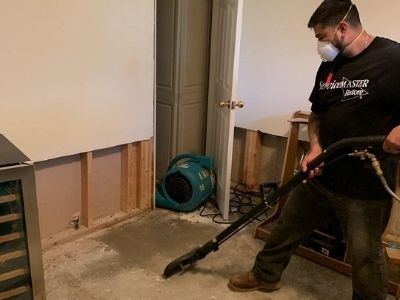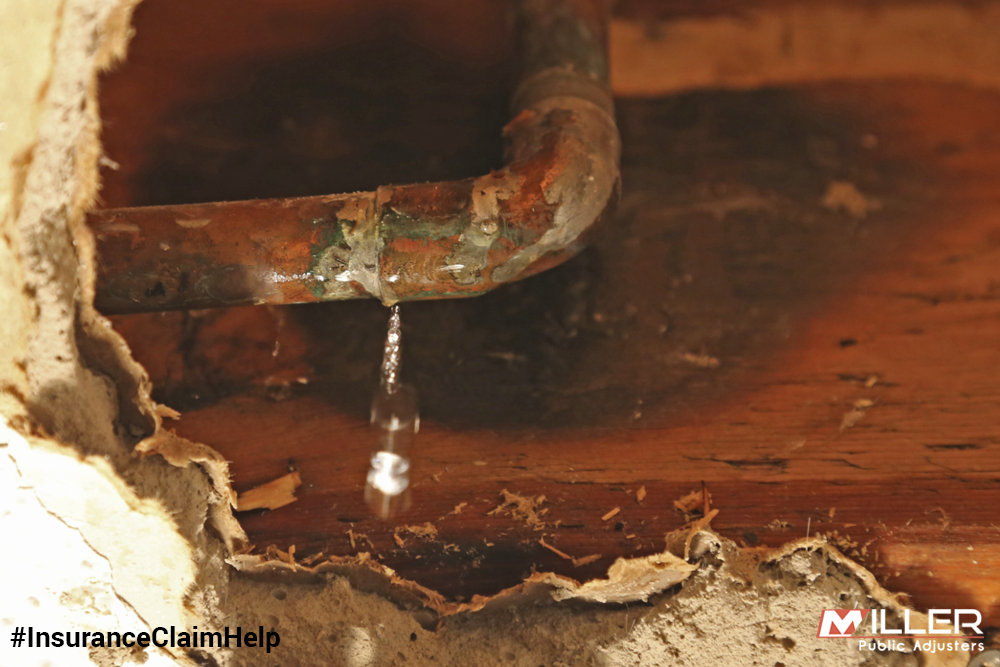Nearly everybody seems to have their personal thinking when it comes to Do’s And Don’ts For Homeowners Managing With Water Damage.

What should you do if a water pipeline ruptureds in your home? The longer you wait, the more extreme the damages that can happen to your residential or commercial property. For these factors, you require to learn just how to act in the occasion of a burst water pipe.
Shut Off the Key Waterline Shutoff
Look for the regional shut-off valve to transform off the water in one particular area only. If you don't understand where the localized shut-off shutoff is, go for the primary water line valve and transform it off. Typically, the main shutoff is discovered outside the home following to the water meter.
Call Water Damage Reconstruction Pros for Assistance
After shutting the water resource, call the professionals for aid. This circumstance is not something you can do some DIY since the pipes needed to be fixed as well as there is a demand to deal with the various other damages to your building. Seek aid from a trusted firm offering 24/7 emergency solutions if you can not deal. With their expert assistance, you can protect against much larger water damage consisting of deformed walls, loosened ceramic tiles, or harmed structures. Don't take this issue gently and also look for professional assistance for your full assurance as well as a credible option.
Record the Damage For Insurance
While you're waiting for the pros to show up, get some paperwork of the damages caused by the errant pipe. Do close-up shots of the damaged belongings as well as areas.
Restore Points That Can Be Conserved
Take a look at the harmed products and take out the most important ones from the stack once you're done taking pictures. Dry them off in a dry/warm place far from the damaged area and try to preserve them as much as you can. Drag as much dampness as you can to the product so it can start to dry.
Begin the Drying Process
You need to start the drying procedure asap. The good news is, the water from your waterlines is currently clean so you don't have to worry about drain water. The flowing water might have disturbed the dust and also particles in your floorboards and also rugs. In this situation, put some gloves on and begin some troubleshooting. Use buckets to unload out the water. Blot out as much water as you can from the surfaces with old towels. Activate an electrical fan or open your windows to promote air blood circulation. These steps will certainly hasten to completely dry as well as hinder mold and mildew and mold development.
Professionals are the only individuals qualified to analyze correctly and also fix the burs pipelines and succeeding damages. As always, pipelines do not just instantly burst out of heaven. They usually provide quiet red flags like bubbling paint, water spots. Weird noises in the plumbing, caving ceiling, stuffy odor, or peeling off wallpaper. Keep in mind of these indications as well as do some preventive measures so you can nip any type of issues in the bud.
What should you do if a water pipeline bursts in your home? For these factors, you need to find out how to act in the event of a ruptured water pipeline. After closing the water source, call the experts for aid. With their expert aid, you can prevent much bigger water damages including distorted walls, loose ceramic tiles, or harmed structures. Fortunately, the water from your waterlines is currently tidy so you don't have to worry concerning sewer water.
How to Handle a Burst Pipe and Minimize Damage
Steps to Take Ahead of Time
If you own property in an area that experiences cold weather, you need to be aware of seasonal maintenance tasks that will help you protect your property as the weather changes each year. One of the most important steps is to winterize your pipes to ensure they won't freeze or burst when the temperature drops. This includes action items like insulating any exposed pipes, detaching garden hoses and covering outdoor faucets. If the weather gets cold enough, you may even consider leaving a faucet dripping or opening cabinet doors during the coldest parts of the day.
No matter how prepared you might be, accidents and emergencies still happen. You'd be wise to set up a savings account specifically for your property so you have a "rainy day" fund set aside for unexpected expenses. All homes—regardless of age, location or condition—will inevitably need some form of emergency repair.
Steps to Take for Frozen Pipes
A frozen pipe will not necessarily burst, so if you can catch a frozen pipe early on, you could save yourself a major headache. When your area experiences frigid temperatures, be sure to check your plumbing and keep an eye out for warning signs like faucets only releasing small amounts of water or toilets not refilling when flushed. If you do run into one of these issues, you're likely dealing with a frozen pipe.
If this happens, your first step should be to cut off the water supply to that section of the plumbing. Expanding and freezing water can quickly cause damage. Even if the water supply is shut off, you will likely still deal with some leaking from the water that defrosts after the pipe has thawed. Be prepared with a mop, bucket and/or towels to quickly soak up any excess water.
In order to thaw a frozen pipe, you can use a space heater, infrared or incandescent heat lamp, or even a hairdryer to warm up the frozen area. Heat tape is also an option and should be used according to manufacturer instructions. Do not use any sort of open flame to thaw frozen pipes, as it poses a major fire hazard and can damage your pipes further.
Steps to Take for a Burst Pipe
Water damage claims are the second most common insurance claim in the U.S. When you're dealing with a frozen pipe, the water continues to expand as it freezes, which creates pressure that can cause a pipe to burst. When this happens, the crack or leak in the pipe allows water flow from the pipe to enter your home where it shouldn't. If a pipe does burst, you need to act quickly to mitigate property damage and repair cost.
Your very first step should be to shut off your main water supply to minimize flooding—typically the most expensive damage to address. Once you've shut off the water supply, make sure you identify the entire area that has been impacted by the leak. Remove as much water as possible—as quickly as possible—using a mop, sponges, towels or a shop vacuum or wet/dry vacuum. To prevent long-term damage due to moisture build-up, run a dehumidifier or fan in the affected area. Contact a licensed plumber to ensure the pipe is correctly repaired before running any water to that section of the home again. Burst pipes and the associated water damage are something you absolutely want to avoid as a property owner. If you've had to learn your lesson the hard way, don't let yourself get caught in a similar situation during the next spell of cold weather. The best way to deal with frozen or burst pipes is to prevent them in the first place—proactive winter maintenance will save you time, money and a whole lot of stress.

I came across that page on Rules For Handling Water Damage when doing a search on the web. If you liked our article plz make sure you remember to pass it around. I am grateful for your time. Please visit our site back soon.